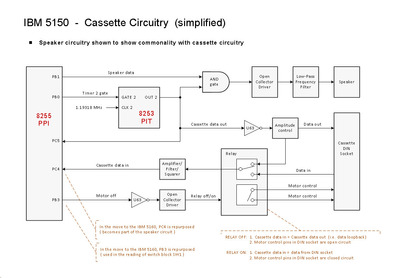kdr wrote on 2022-06-19, 07:23:
Wow, awesome, I have always been fascinated by the (almost useless) cassette port on my 5150. Guess I'd better go dig out the tape player and get it connected up...
Me, too. But for other reasons. Cassette I/O wasn't just used for datasettes, but also for communications.
Things like RTTY, Packet Radio, Weather Fax, SSTV and so on.
Home computer users not seldomly made use of the cassette ports for things this.
Either by directly reading the signals or by using tone detector ICs such as XR2211 and so on.
Some datasette formats were compatible with RTTY equipment, even.
Like the Kansas City Standard (KCS) which used a different tone set and a different encoding.
https://en.wikipedia.org/wiki/Kansas_City_standard
The Tono Theta 7000e communications terminal, for example, from the 1970s, supports it for loading/saving text from/to datasette or a microcomputer.
Theoretical, a tape cable between two PC 5150s could form a simple network connection, even.
1200 Baud was good enough for simple things.
The Videotex systems in France/Swiss/Germany were dialed into at 1200 Baud down and 75 Baud up often.
Likewise, Packet Radio on CB radio used 1200 Baud AFSK.
Too bad these things never came true on the IBM PC.. 😔
Personally, I think it's a shame that IBM engineers removed the port. That was soo unnecessary.
Couldn't they at least leave some Cassette IN headers on the later motherboards? Just like for the internal PC Speaker (which was Cassette OUT)?
Man, this makes me kind of angry and sad. 😒
http://minuszerodegrees.net/5160/diff/5160_to_5150_8255.htm
Edit: That site has a diagram of the cassette interface.
I'll attach it here, hope that's okay.
"Time, it seems, doesn't flow. For some it's fast, for some it's slow.
In what to one race is no time at all, another race can rise and fall..." - The Minstrel
//My video channel//
